WIDELUX Tips & Tricks
WIDELUX BASICS
- Swing Lens Panoramic Film Camera
- There is no shutter; the slit lens pans across a curved strip of film. The exposure is controlled by the speed of the panning motion.
- Aspect Ratio 3:1; 126° angle of view
- Three shutter speeds: 1/15, 1/125, /1/250
- Five f-stops: 2.8 – 4 – 5.6 – 8 – 11
- Makes about 20 panoramic images per roll of 35mm film

Widelux f8
TIPS & TRICKS for the Classic Widelux
Rule #1: ALWAYS ADVANCE THE FILM (COCK THE SHUTTER) BEFORE YOU SET A NEW SHUTTER SPEED!
Breaking this rule is the only way you can kill a Widelux, other than dropping it from a considerable height. Don’t panic if you forget once, though; the camera will forgive a few mistakes. If you have advanced the film and the shutter speed still doesn’t want to click into place, NEVER FORCE IT. Go back to the previous shutter speed and try again. If it’s still not clicking in, take one picture with the knob set between speeds, advance the film, and try to set the speed again.
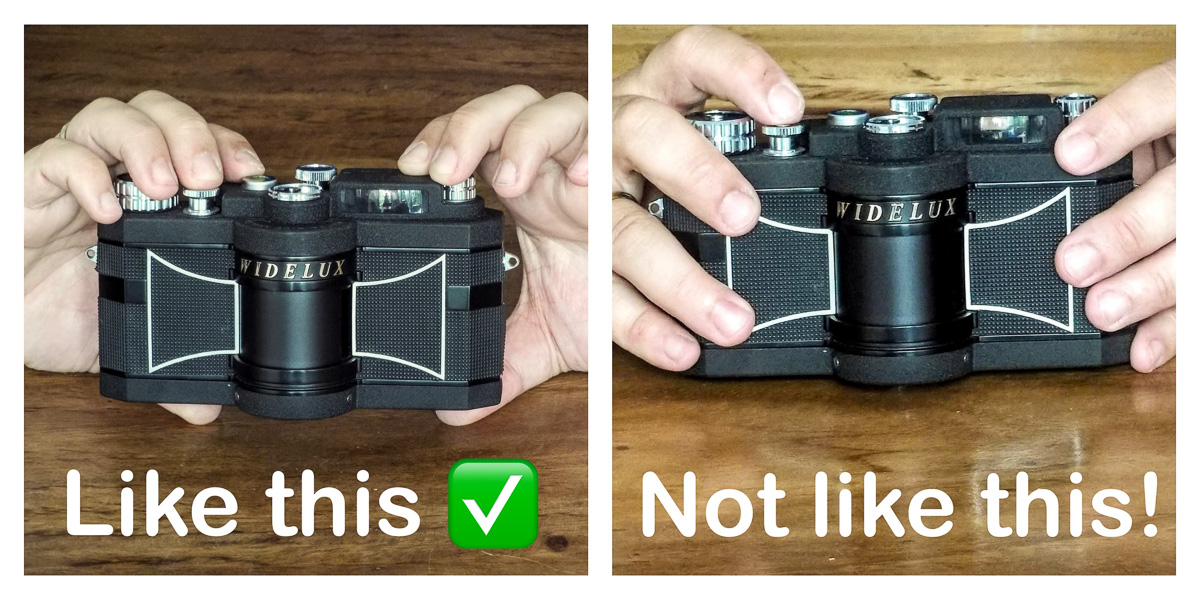
Rule #2: Get your fingers and camera strap/pouch out of the picture.
It’s hard to appreciate just how much the Widelux captures on the sides of the frame, so be sure to hold the camera correctly and check the corners of your camera pouch and loops of strap.
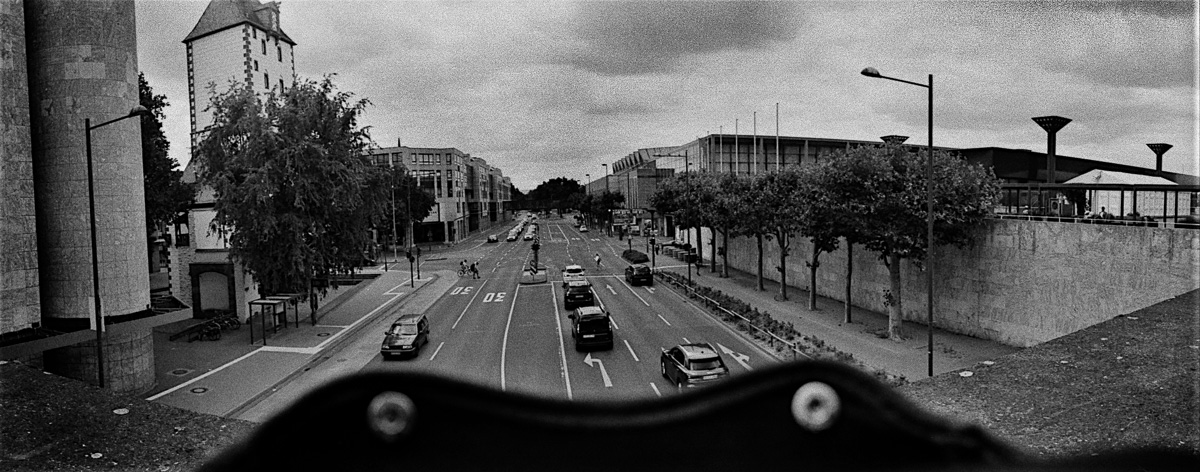
The intruding camera pouch almost looks cool in this photo…
Rule #3: Viewfinder Accuracy
The viewfinder is fairly accurate on the left side, but it’s more of a “guessfinder” on the right, and it only shows about 2/3 of what you’ll get vertically. The arrows on the top of the camera can actually be helpful if you want to see more accurately what will be in your frame.
Rule #4: Straight Lines
The bubble level is your best friend if you want straight lines in your image. Many people like to play around with the interesting line distortions the Widelux can make, but if you would like to have a straight horizon, make sure to put it in the center of your image and line it up with the bubble level.
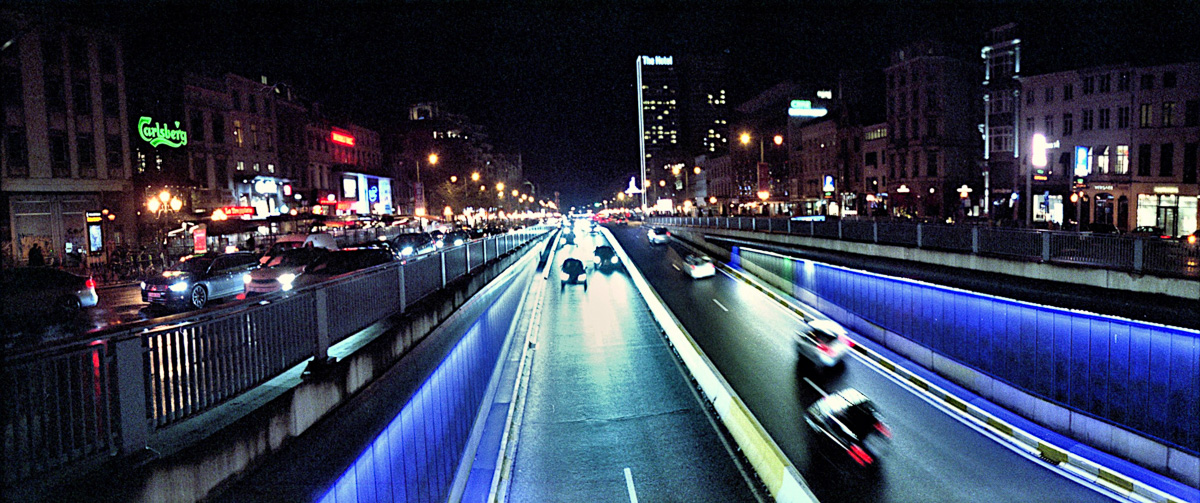
©Marwan El Mozayen, Brussels at Night
It is possible to get straight leading lines in a Widelux photo!
Rule #5: You can’t focus — the focus is fixed
The amount of your image which is in focus (depth of field) is controlled by the aperture (f-stop) you choose. The lower the number, the lower the amount of your picture that will be in focus — at f2.8 the picture is unsharp until about from 10 feet (3m) from the camera, and the far distance is also unsharp. The higher the f-stop number, the higher the amount of your image that will be in focus — at f11, everything is in focus from 3 feet (1m) to infinity. A general rule is that a subject about 10 feet (3m) from the lens will be in focus no matter which aperture you choose.
Rule #6: You can’t use a flash with a Widelux
This makes sense once you realize that the panning lens takes a while to move from one side of the frame to the other. If a flash goes off during the time the lens pans, you will have one bright area of the image which was exposed during the time the flash was lit, but the rest will be darker. You can use a steady video light or reflector, of course.
Rule #7: Watch out for possible lens flares
The panning lens is susceptible to massive lens flares from light sources that you may not have noticed as being particularly bright in the overall composition.
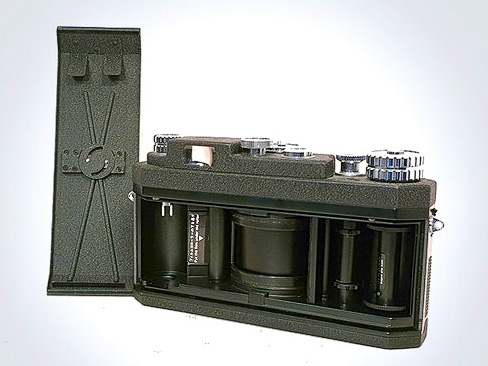
Inside a Widelux, the rotating barrel can be seen clearly
Dealing with Widelux “Banding”
A very common problem with Widelux cameras that haven’t had a service/cleaning recently is “banding”, i.e., vertical dark or light stripes on the image. This is usually due to uneven rotation speed of the lens caused by dirt in the gears. The lens is always open, so a sticky spot in the panning motion of the lens would leave it open on one area of the film longer than the others, which makes that area brighter.
To help prevent banding caused by dirt build up, “massage” the gear mechanism by pulling the lens to the right (with shutter uncocked!) and releasing it. This won‘t hurt the camera. It’s a good idea to make a habit of doing this several times before loading a new roll of film, but it’s not necessary; the camera will work if you don’t.
If you already have banding, try massaging the shutter quite a few times in a row. If this doesn’t help, you‘ll need to have it professionally cleaned.
*Florescent lights can also cause banding! The flickering of fluorescent lights often causes banding problems at 1/125 or 1/250 second, but not at 1/15.
WIDELUX SPECIAL EFFECTS
You can get straight lines and undistorted images of people and things with a Widelux. But it’s a lot of fun to experiment with the special effects you can get using the panning lens!
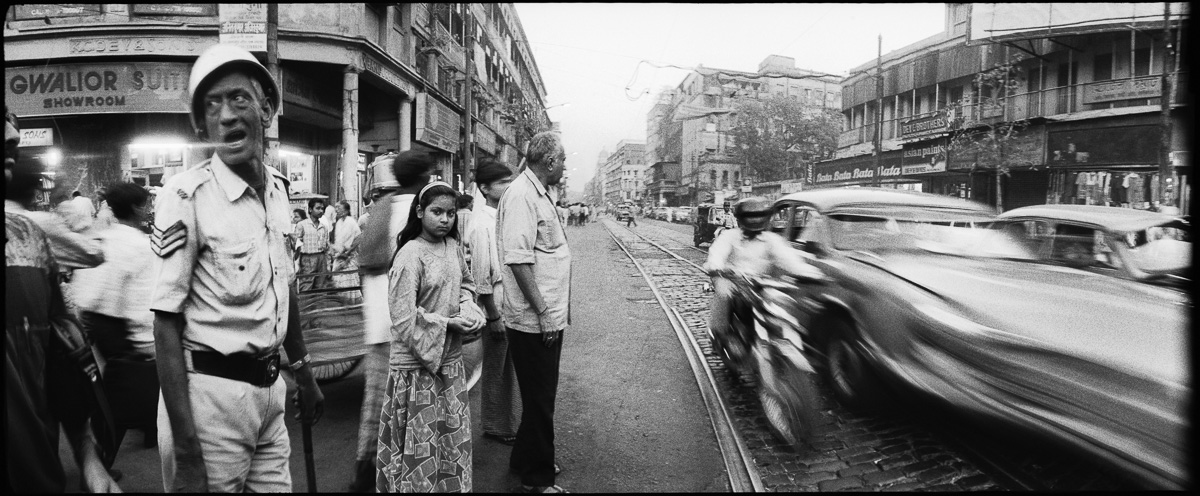
©Zana Briski, Calcutta
This image brings busy Calcutta to life by accenting the motion of the car, which moved in the same direction as the panning lens. The image also highlights the stillness of the girl looking into the camera. The unexpected flares of the bright reflections in the background at left add to the scene rather than distracting from it.
Elongated or Shortened Through Movement
Things that are moving during the time that the lens is rotating will be distorted.
- If the thing or person is moving in the same direction as the lens (left to right), it will be elongated.
- If the thing or person is moving in the opposite direction of the lens (right to left), it will be shortened.
This can be fun to play with!
Bowed Lines
If you ignore the bubble level on purpose, you can make straight lines curve in your image.
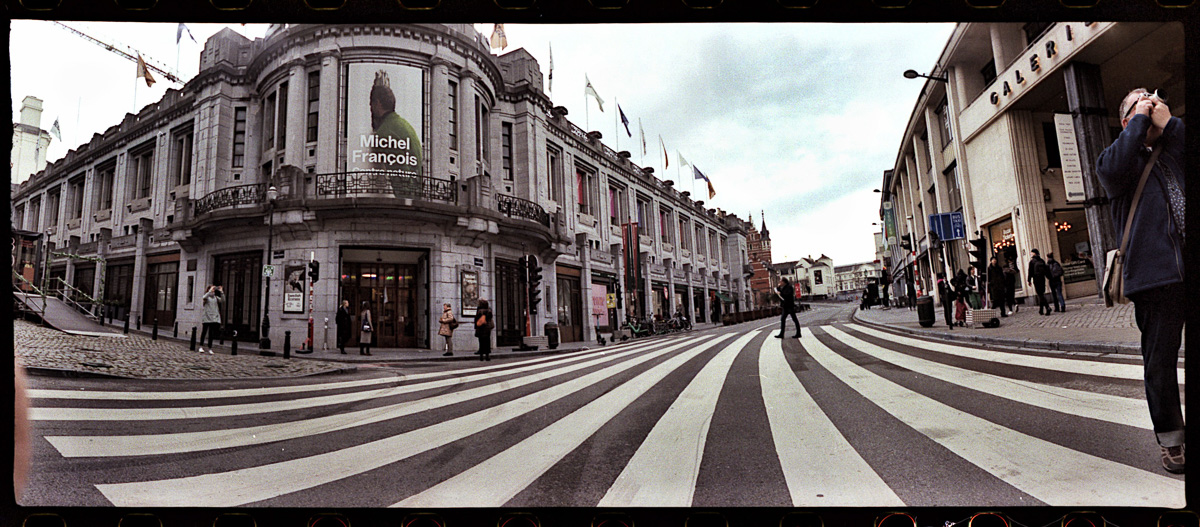
©Marwan El Mozayen
The pedestrian crossing lines here are bowed in a very interesting way which makes the photo look artistic and intentional.
Unfortunately, Rule #2 (finger at left) & Rule #3 (half a friend at right) got in the way, so the image would need to be cropped, altering the Widelux ratio.
Double Portraits
Jeff Bridges has perfected the art of capturing two pictures of the same person in a single image in his “Comedia / Tragedia” series. He does this by shifting the image frame quickly in mid-pan.
You can see a demonstration of it at 2:45 of this video.
Full details of the Widelux Camera Project, as well as a portfolio of the Bridges’ images and other articles on panoramic photography, are only available in the printed magazine. Order here for delivery worldwide.

